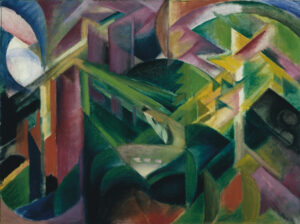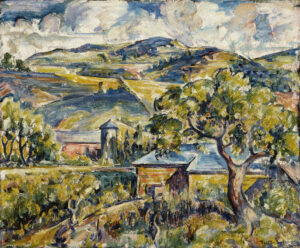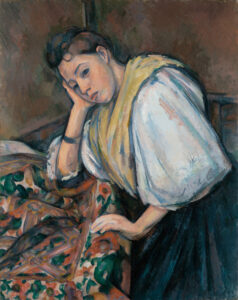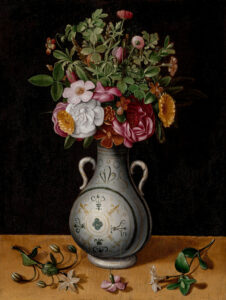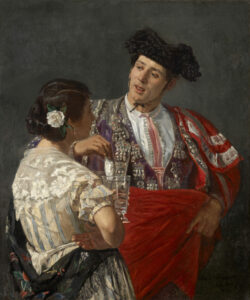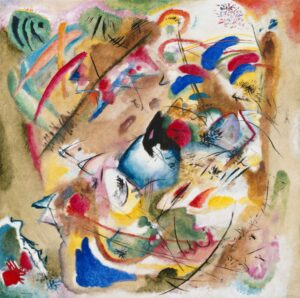Oscar-Claude Monet was born on November 14, 1840, in Paris. The son of Adolphe Monet, a textile merchant, and Louise-Justine Aubrée, he grew up in Le Havre where his family relocated around 1845. From an early age, he displayed remarkable talent for drawing, creating caricatures of professors and local notables, which he began selling with some success from 1857, the year his mother died.
Claude Monet’s biography
A pivotal encounter with Eugène Boudin in 1858 introduced him to plein-air landscape painting. As Monet would later acknowledge: “If I became a painter, it is entirely due to Eugène Boudin.” That same year, he exhibited his first canvases at the Le Havre Municipal Exhibition of Fine Arts.
In 1859, Monet moved to Paris where he attended the Académie Suisse, meeting Camille Pissarro among others. His military service in Algeria (1861-1862) was cut short by typhoid fever, allowing his aunt Jeanne Lecadre to negotiate his exemption in exchange for academic art classes, which he attended reluctantly.
In 1862, he entered the École Impériale des Beaux-Arts in Charles Gleyre’s studio where he forged friendships with Auguste Renoir, Alfred Sisley, and Frédéric Bazille. He quickly departed from this academic teaching, disagreeing with his master on the representation of nature. Gleyre favored idealized forms while Monet sought to reproduce nature as it appeared to the eye.
The Path to Recognition (1866-1879)
The year 1866 marked both his meeting with Camille Doncieux, future mother of his son Jean, and his first notable success at the Salon with Woman in the Green Dress, a portrait of Camille completed in just four days. Émile Zola praised this work, an early testament to Monet’s talent for capturing natural light.
Despite this success, Monet faced recurring financial difficulties. His paintings were frequently rejected by the official Salon, like Women in the Garden in 1867. His poverty was such that he attempted suicide in spring 1868, though according to his own account, this gesture was not serious as he was an excellent swimmer.
To escape the Franco-Prussian War of 1870, Monet took refuge in London with Camille, whom he had married on June 28, 1870. This stay proved decisive: he discovered the works of Turner and Constable, and most importantly, met the art dealer Paul Durand-Ruel, who would become his main commercial supporter. He continued his journey to the Netherlands before returning to France in October 1871.
From 1871 to 1877, Monet settled in Argenteuil, where he intensively painted the Seine and its banks. It was there that he fully developed the Impressionist technique, particularly during his painting sessions with Renoir at La Grenouillère (1869). In 1874, he participated in the first exhibition of the Impressionist group, presenting Impression, Sunrise, the painting that would inadvertently give the movement its name following an ironic critique by Louis Leroy.
The year 1876 marked his meeting with Ernest Hoschedé, a wealthy collector who would become his patron before going bankrupt. Monet then stayed at the Château de Rottembourg in Montgeron, property of Ernest and Alice Hoschedé, who would later become Monet’s second wife.
In 1877, he painted his famous series on the Saint-Lazare train station, prefiguring his future serial method. That same year, during the third Impressionist exhibition, the artists claimed for the first time the term “Impressionism” to identify their style.
In 1879, after giving birth to their second son Michel, Camille died, leaving Monet deeply affected. He testified to these final moments with a moving portrait of her on her deathbed.
The Giverny Years and Serial Works (1880-1899)
After Camille’s death, Monet settled in Vétheuil with his two sons, joining Alice Hoschedé and her children. Their cohabitation scandalized society at the time. The painter went through a difficult period, marked by an aesthetic rupture visible in his winter paintings of the frozen Seine in 1880.
In April 1883, Monet discovered Giverny where he rented a house that he would purchase in 1890. He would live there until his death, gradually transforming the garden into a work of art, notably creating the famous water lily pond in 1893.
The 1890s marked a turning point in Monet’s career with the systematic development of “series”: the same motif painted at different times and seasons. This approach, already sketched in his earlier works, now became his artistic signature. The principal series include:
- The Haystacks (1890-1891): over twenty variations of haystacks near his property, capturing the changing effects of light.
- The Poplars (1891): rows of trees along the Epte River, painted from spring to autumn.
- The Rouen Cathedral (1892-1894): twenty-eight canvases depicting the Gothic façade under different atmospheric conditions, worked on in the studio until 1894.
- The Mornings on the Seine (1896-1897): a series on light effects on the water’s surface, a prelude to his future water lilies.
These series enjoyed increasing commercial and critical success, allowing Monet to achieve financial comfort. In 1890, he married Alice Hoschedé, widowed since 1891, formalizing a relationship that had lasted for years.
From International Triumph to Final Works (1899-1926)
Between 1899 and 1901, Monet made three visits to London, working on his series of Houses of Parliament, capturing the fog on the Thames. Exhibited in 1904, this series constituted his greatest triumph until then.
From 1903, Monet devoted himself primarily to his garden, especially the Water Lilies. In developing this series, he progressively eliminated traditional spatial references and modified his formats, moving from rectangle to square, then to circle. The exhibition of Water Lilies in May 1909 confirmed his status as an undisputed master.
In 1908 and 1909, two stays in Venice inspired a series of paintings that he would rework until 1912, when they were exhibited at the Bernheim-Jeune brothers’ gallery.
The last period of his life was marked by several trials: Alice’s death in 1911, the diagnosis of bilateral cataracts in 1912, and the loss of his son Jean in 1914. Despite these difficulties, encouraged by his friend Georges Clemenceau, Monet undertook his most ambitious project: The Large Decorations of Water Lilies, a monumental ensemble intended to be installed in an elliptical room.
In 1922, an act formalized the donation of nineteen panels to the French State. Despite cataract surgery in 1923 that improved his vision but altered his color perception, Monet worked tirelessly on these decorations.
Suffering from lung cancer, Claude Monet died on December 5, 1926, in Giverny, at the age of 86. At his funeral, Clemenceau, refusing the traditional black for his friend, covered his coffin with a colorful cloth, declaring: “No black for Monet! Black is not a color!”
The Large Decorations were installed at the Orangerie des Tuileries and inaugurated on May 17, 1927, consecrating the visionary legacy of an artist who revolutionized painting through his ceaseless quest for light.
Monet’s Artistic Approach
Monet’s art is characterized by several fundamental elements:
The primacy of light and color: Monet sought to capture the fleeting effects of light on objects rather than the objects themselves. His palette gradually brightened, exploring how light modifies our perception of colors.
Plein-air painting: Following Boudin’s teaching, Monet painted directly before the motif, capturing immediate impressions of nature. Contrary to what he claimed, however, he often finished his canvases in the studio.
The visible brushstroke: Monet abandoned the smooth finish of academic painting for rapid, juxtaposed touches that reconstruct the vibration of light.
The serial approach: By painting the same motif at different moments, Monet demonstrated that the truth of a landscape resides as much in atmospheric conditions as in its topography.
Evolution toward abstraction: In his later works, particularly the Water Lilies, Monet approached abstraction by suppressing the horizon and conventional spatial references, anticipating certain developments in 20th-century art.
His painting testifies to a ceaseless quest, that of a man who, in his own words, was interested in “nothing in the world but his painting – and also his garden and his flowers.” This absolute dedication to his art makes Monet the very incarnation of Impressionism, a movement that radically transformed our visual perception and paved the way for pictorial modernity.


